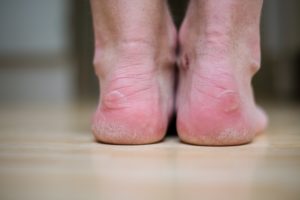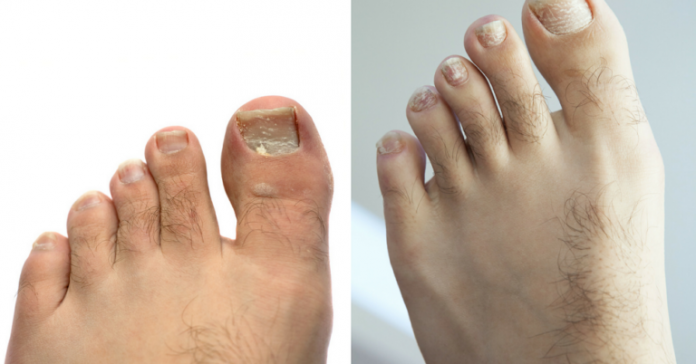For many people, Psoriasis is a problem. But, what happens when said problem appears on an area of the body that is not only delicate but very important? Psoriasis on the feet can be extremely dangerous if not treated well, so we will talk about how to counteract its symptoms. Let us begin with the basics: What is Psoriasis?
What is Psoriasis?
Psoriasis is a chronic autoimmune condition that causes a rapid build-up of skin cells in different parts of the body. Typically, skin cells grow deep in the skin and slowly rise to the surface and, eventually, they fall off. The typical life cycle of a skin cell is one month, but in people with psoriasis this process occurs in just a few days and it’s because of this that the skin cells do not have time to fall off. This rapid overproduction leads to the build-up of skin cells in the body.
Because of how rapidly it produces skin, this build-up of cells causes scaling on the surface of the skin. There is usually some inflammation and redness around the scales too and, sometimes, these patches will crack and bleed.

Types of Psoriasis
Psoriasis can present itself in many forms and each one of them presents different symptoms. Here are the most common:
1. Plaque psoriasis: The most common type of psoriasis. It causes red and inflamed skin cells patches that cover areas of the body, often with whitish-silver scales or “plaques” (these are where the name come from). The plaques are commonly found on the elbows, scalp, and knees.
2. Guttate: Guttate psoriasis presents itself more commonly during childhood. This type of psoriasis causes small pink spots on the torso, arms, and legs.
3. Pustular: Pustular psoriasis is more common in adults and causes areas of white, pus-filled blisters and red, inflamed skin. Although it can be widespread, it is typically localized to smaller areas of the body, such as the hands or feet.
4. Inverse: Patches of inverse psoriasis develop under armpits or breasts, in the groin, or around skinfolds in the genitals and cause bright areas of red, shiny, inflamed skin.
5. Erythrodermic: Psoriasis of this type is very rare and covers large sections of the body at once and is very rare. The red patches look like sunburned skin and scales that develop often slough off in large sections. It is not uncommon for a person with this type of psoriasis to run a fever or become very ill.
Psoriasis on the feet
Studies have revealed that at least 10% of people are born with genes that could cause psoriasis, but only about 2% actually get it. The most common triggers of psoriasis include stress and injury, and people who have psoriasis of the feet can easily trigger its symptoms by way of injury since the feet are areas constantly exposed and used. It is very important for people with this kind of psoriasis to take care of their feet since cracking of the skin can lead to infection.

Treatments
Treatment of Psoriasis often requires the use of topical medicine. Topical steroids and ointments are the most commonly prescribed medications, along with some ultraviolet light treatment and oral medication. Nevertheless, with well-timed habits, the results are shown to be even better
- Stop smoking, as it is a psoriasis trigger.
- Limit alcohol intake.
- Wear comfortable shoes.
- Avoid injury as much as possible.
- About twice a day, soak your feet in warm water, pat them dry, and then cover them with a moisturizer to lock in moisture. After this, some physicians recommend covering your feet with a waterproof dressing for a few hours or overnight.
SOURCE: https://www.everydayhealth.com/psoriasis/symptoms/when-psoriasis-affects-your-feet/









